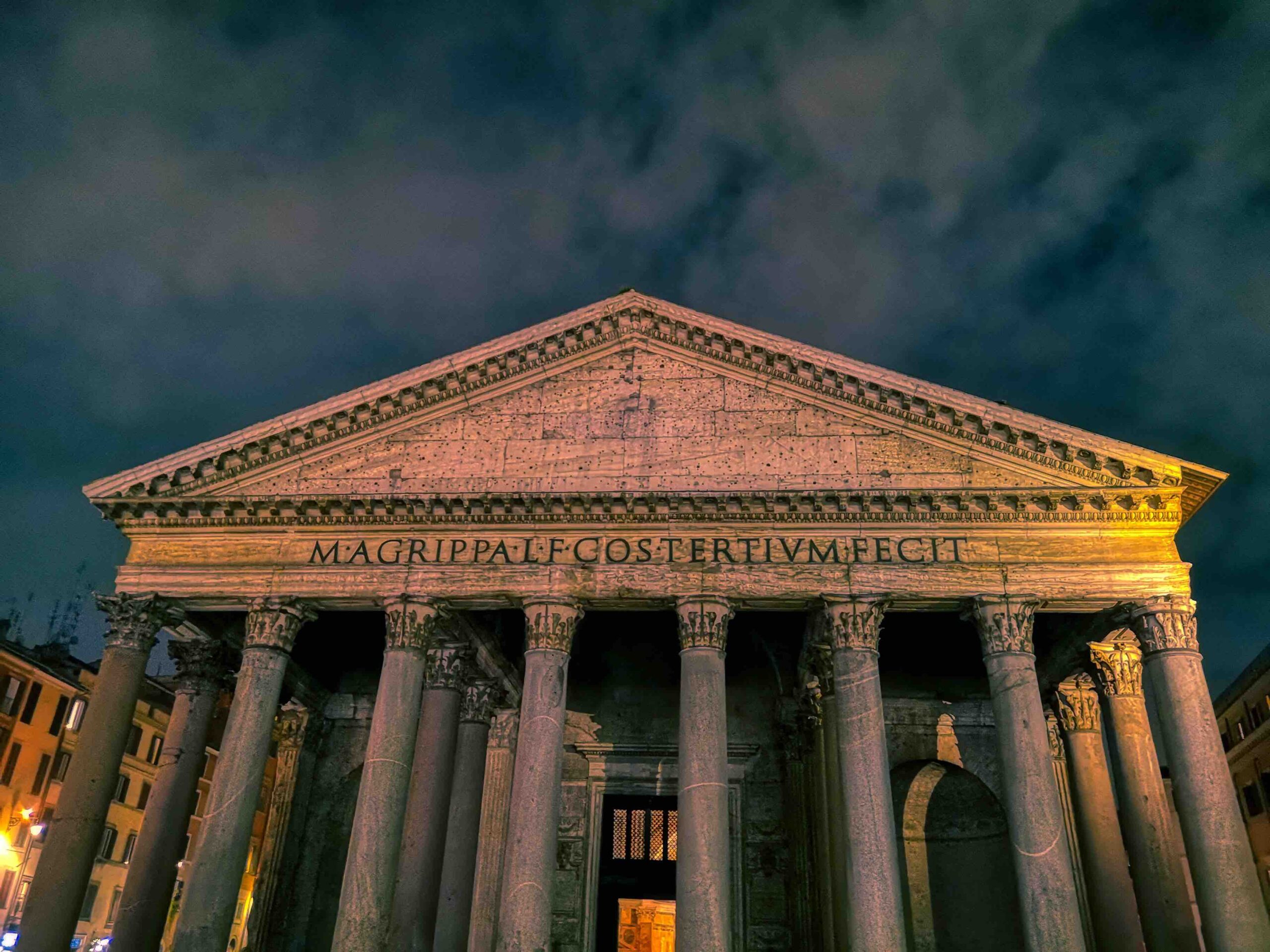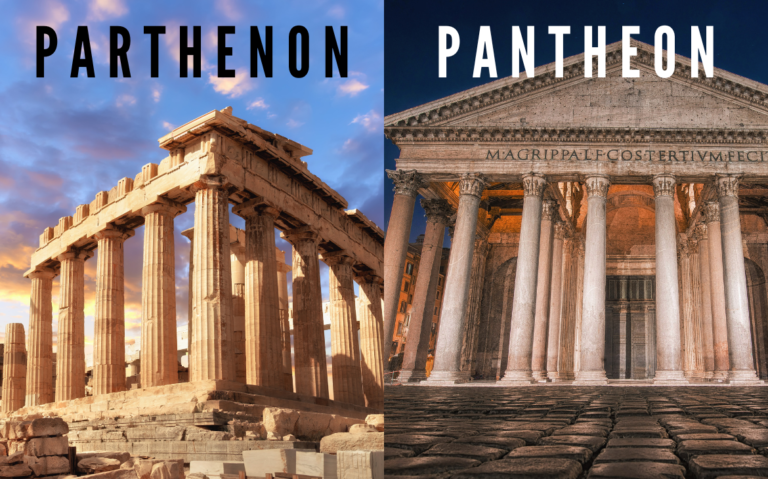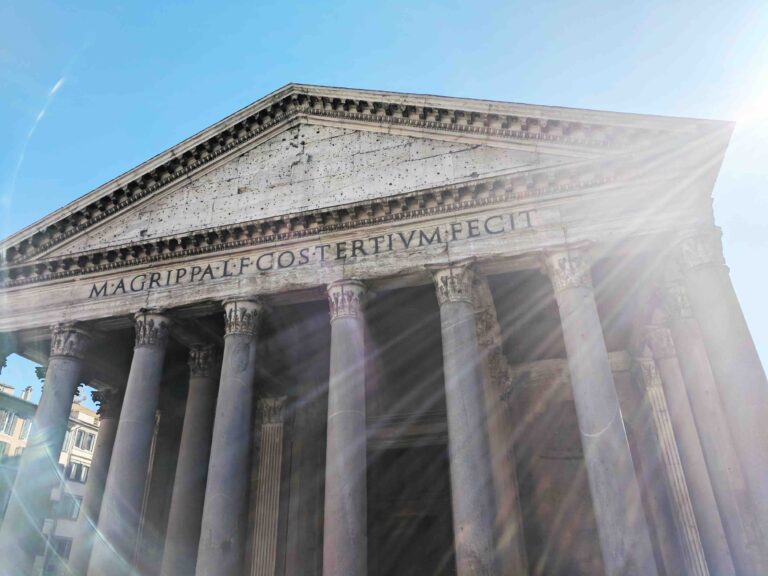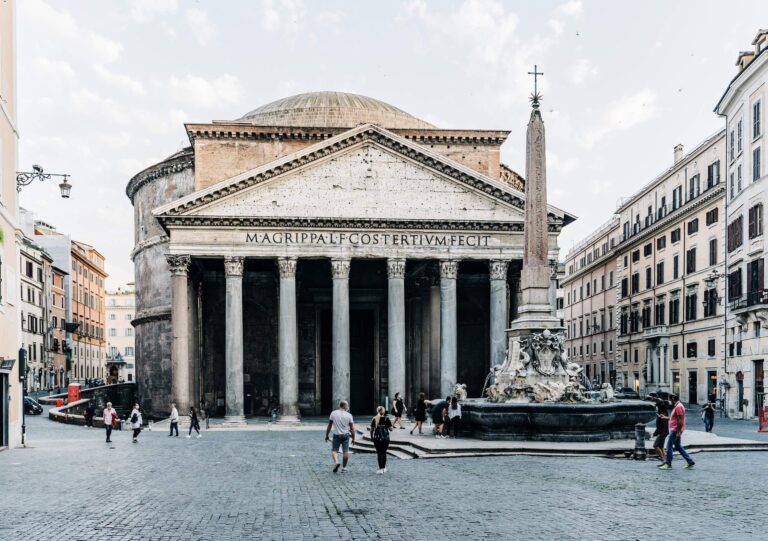The Roman Pantheon, with its awe-inspiring dome and majestic presence, stands as a testament to the architectural genius of ancient Rome. But who were the masterminds behind the construction of this iconic structure? Let’s delve into the fascinating history and uncover the individuals responsible for building the Roman Pantheon.
Table of Contents
ToggleAgrippa and the Original Pantheon
The original Pantheon, known as the Temple of All the Gods, was commissioned by Marcus Vipsanius Agrippa, a prominent Roman statesman and military general, in 27 B.C. Agrippa, a close associate of Emperor Augustus, envisioned a grand temple that would honor the deities of ancient Rome. This initial structure, constructed under Agrippa’s supervision, was unfortunately destroyed by a fire in 80 A.D.
Hadrian’s Reconstruction and the Architectural Vision
The Pantheon we see today, however, is the result of a remarkable rebuilding project that took place under the orders of Emperor Hadrian in 126 A.D. Hadrian, an admirer of Greek culture and a patron of the arts, sought to restore the Pantheon to its former glory. While Hadrian is often credited with the construction of the Pantheon, it is essential to recognize the contributions of the architects and engineers who brought his vision to life.
The primary architect of the Pantheon’s reconstruction was likely Apollodorus of Damascus, a renowned Greek architect and engineer. Apollodorus was widely recognized for his talent and had previously served as the chief architect for Emperor Trajan, overseeing the construction of various public works. His expertise in engineering and design made him the ideal choice for the ambitious Pantheon project.
Under Apollodorus’ guidance, the Pantheon’s new design emerged, combining elements of both Greek and Roman architectural styles. The grandeur of the Pantheon lies in its harmonious blend of classical elements and innovative engineering techniques.
The Magnificent Dome and Innovative Engineering
The dome of the Pantheon, its most distinctive feature, is a testament to the architectural brilliance of the time. The construction of such a massive dome presented unique challenges. The use of concrete allowed for the creation of a lightweight and self-supporting structure. The dome’s interior was constructed using lighter materials, while the base of the dome used heavier materials to ensure stability.
The innovative design of the dome showcased Apollodorus’ expertise in engineering, and it remains a marvel to this day. The use of coffers, or sunken panels, reduced the weight of the dome while adding to its visual appeal. This design choice also demonstrated an advanced understanding of stress distribution, ensuring the dome’s structural integrity.
Skilled Craftsmen and Artisans
In addition to Apollodorus, several other skilled craftsmen and artisans contributed to the construction of the Pantheon. Sculptors and stonemasons worked diligently to shape the intricate details of the facade, including the Corinthian columns and the decorative friezes. The interior of the Pantheon was adorned with stunning marble finishes and statues, creating a breathtaking ambiance.
The completion of the Pantheon marked a significant achievement in Roman architecture and engineering. The dedication to precision and craftsmanship demonstrated by Apollodorus and his team resulted in a structure that has stood the test of time, enduring for over two millennia.
Significance and Cultural Transformations
The Roman Pantheon’s significance goes beyond its architectural splendor. It evolved from a pagan temple dedicated to the Roman gods to a Christian church, a testament to the adaptability and cultural transformations of Rome over the centuries. Its transformation speaks to the enduring legacy of Roman civilization.




